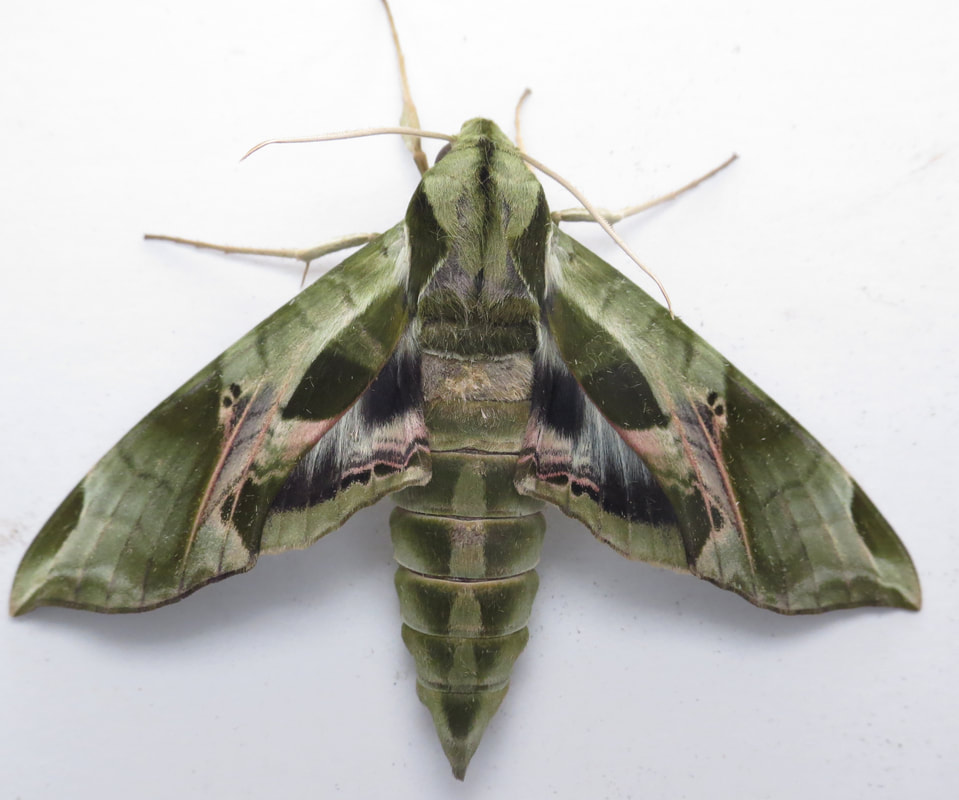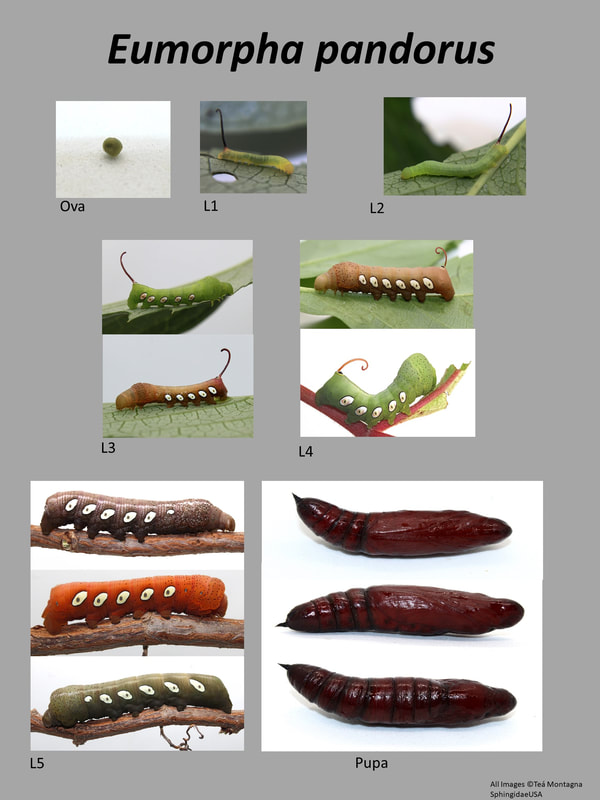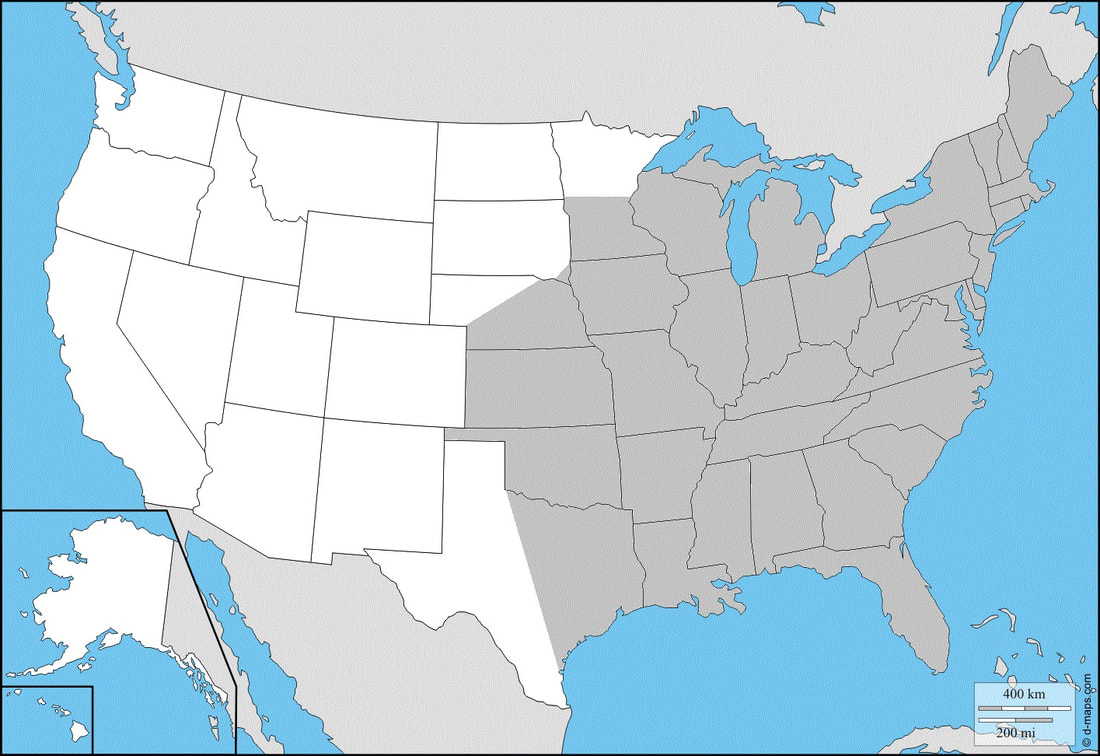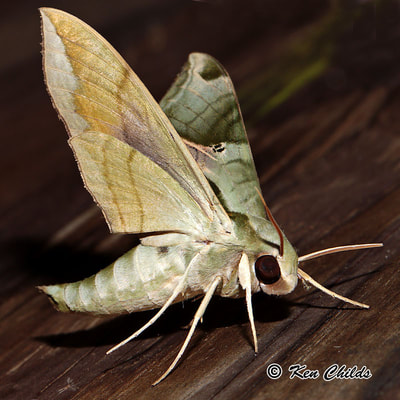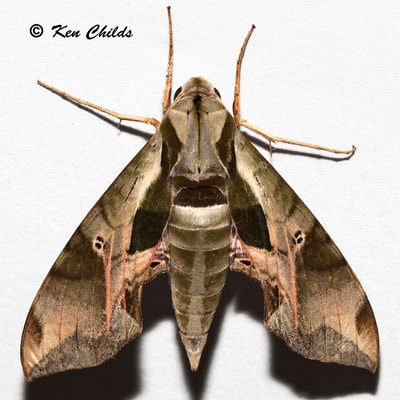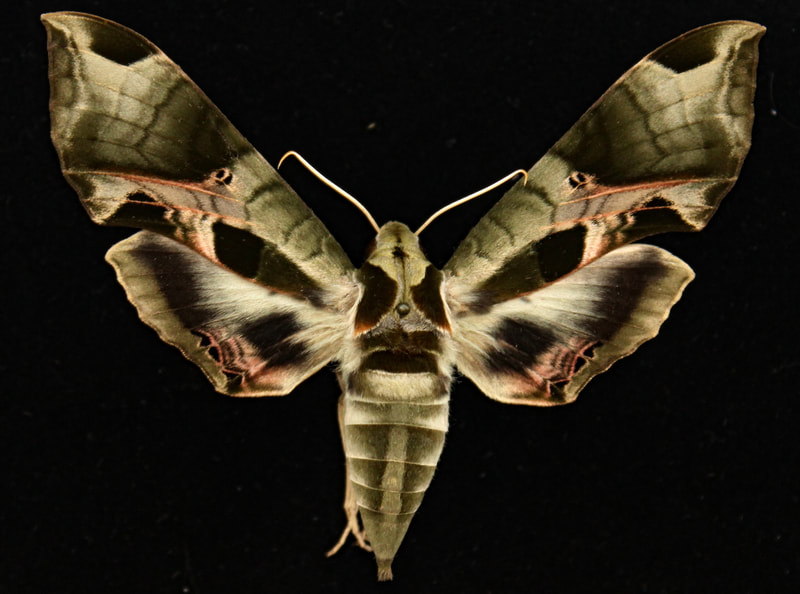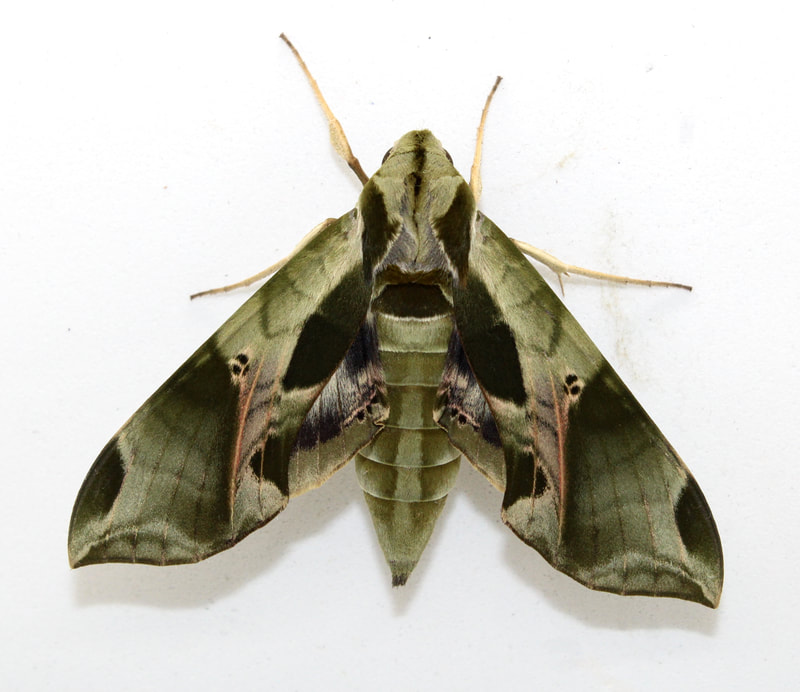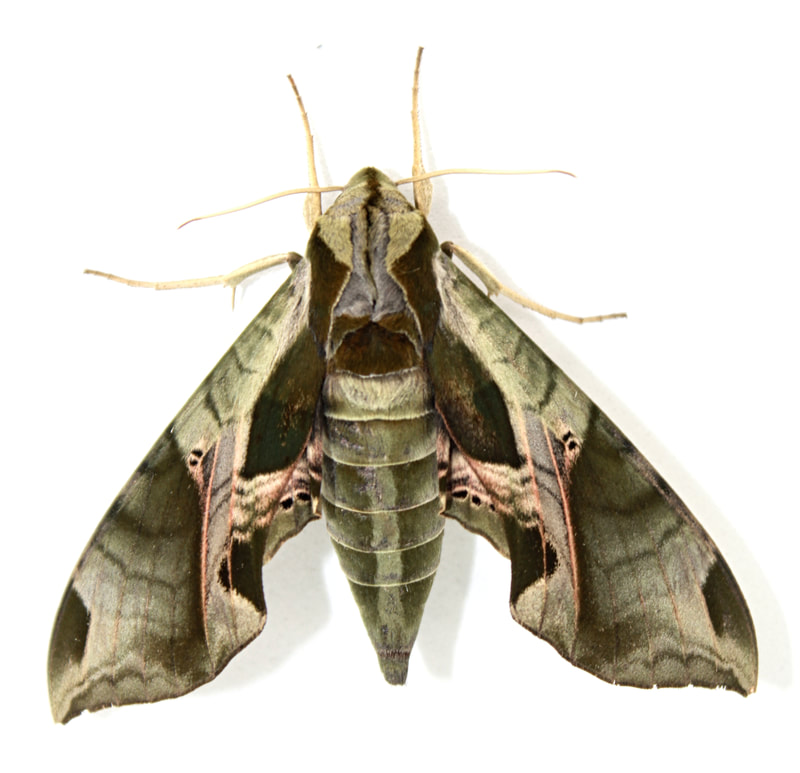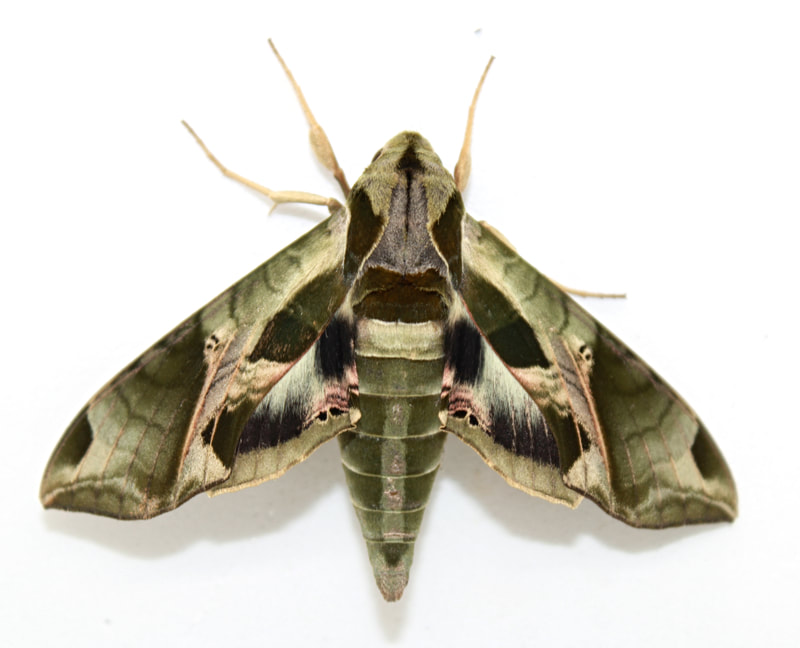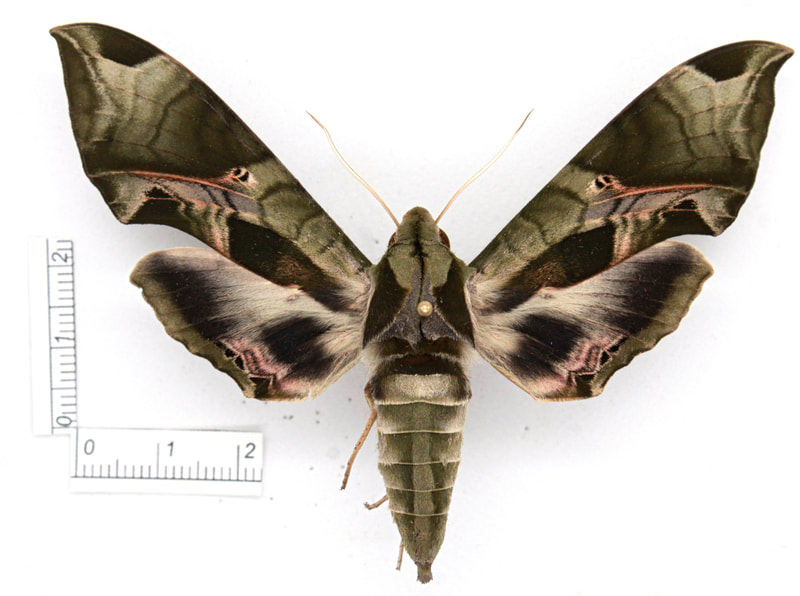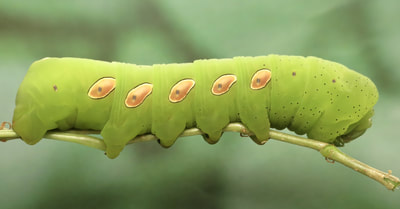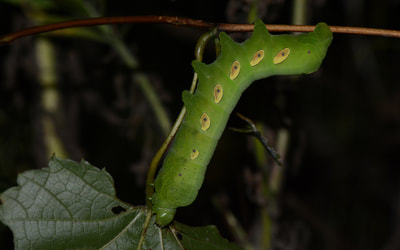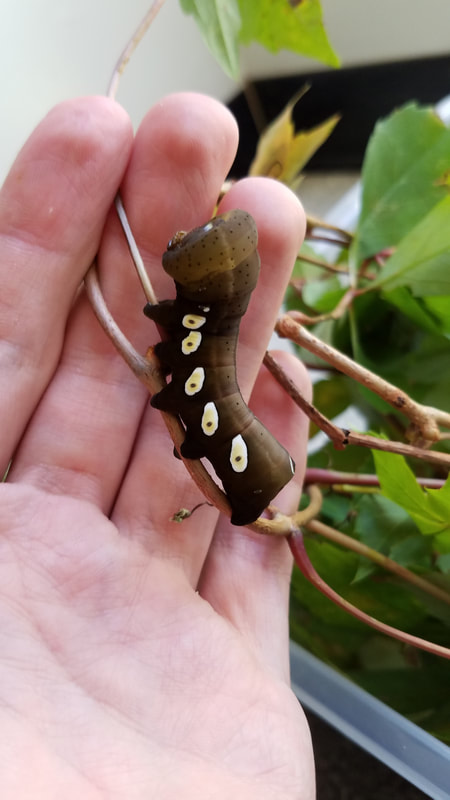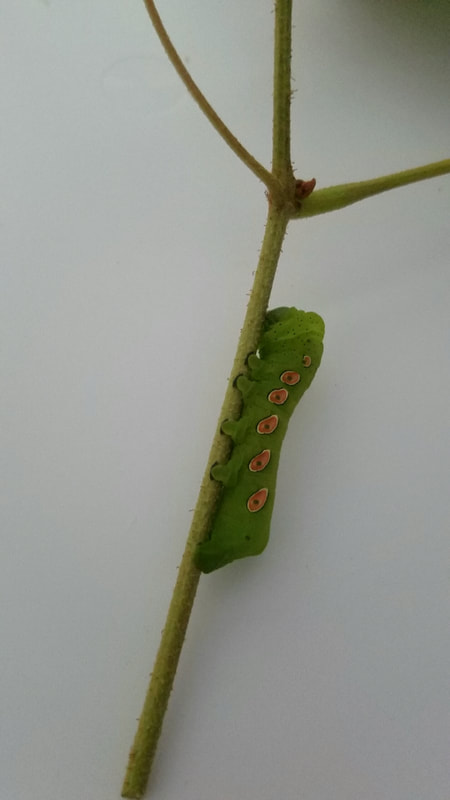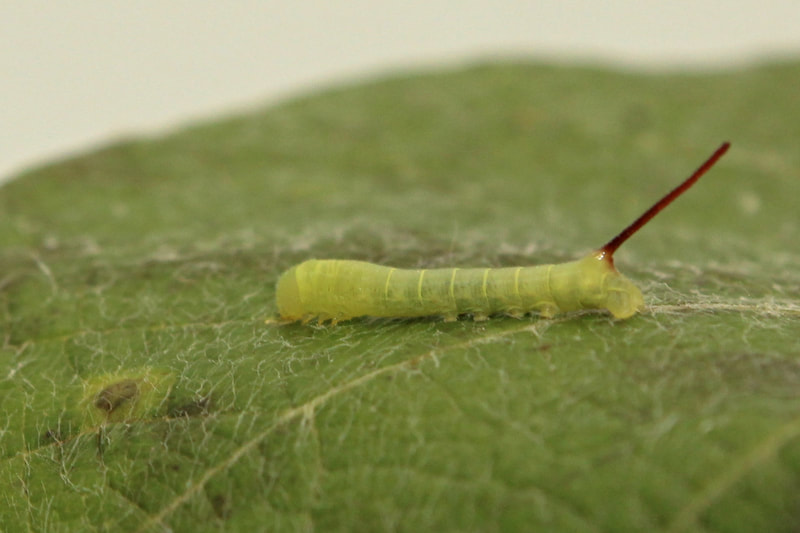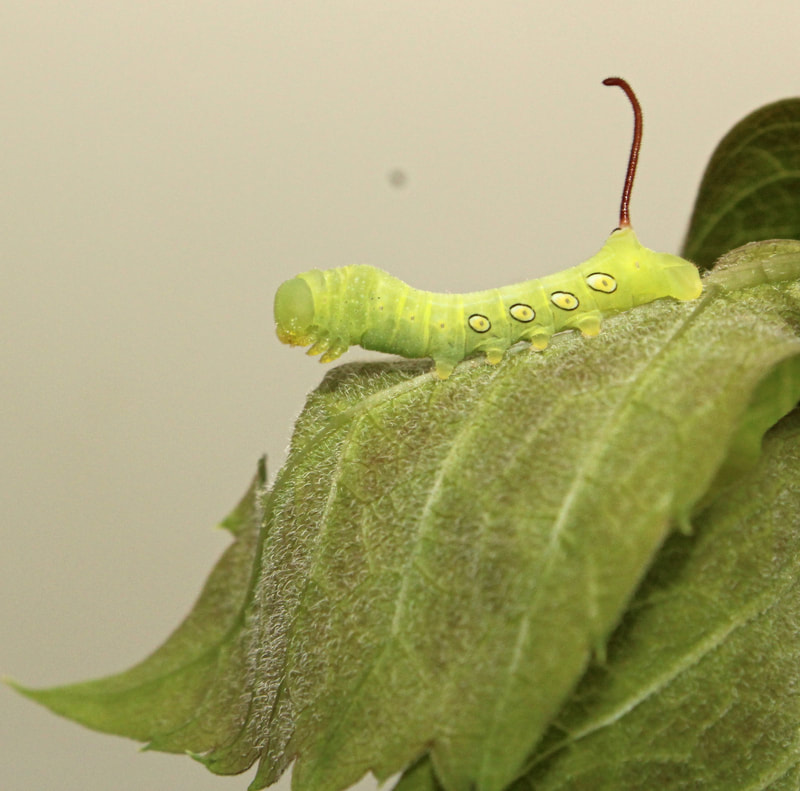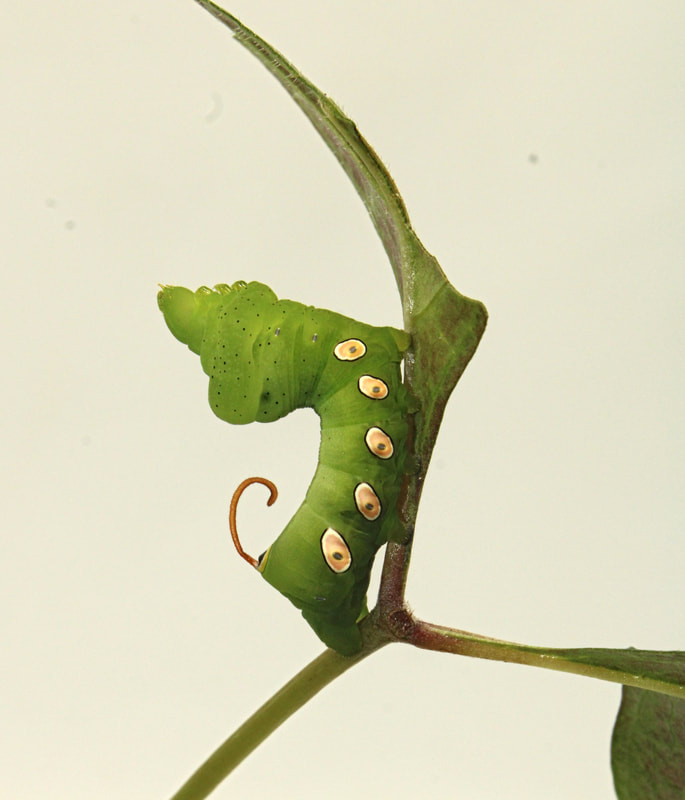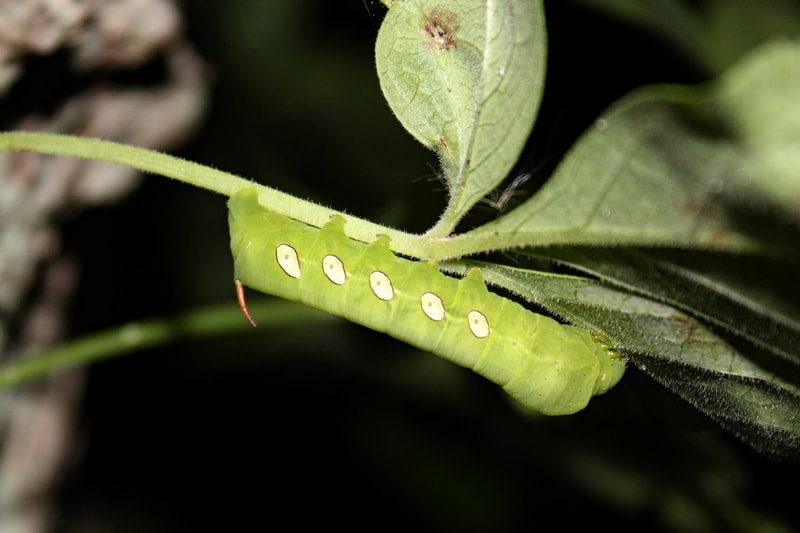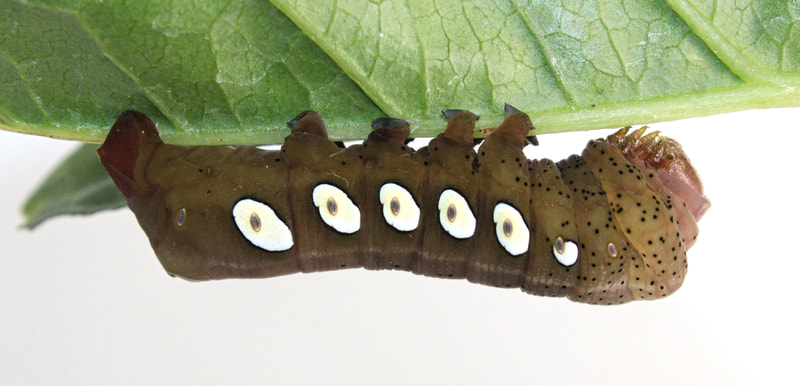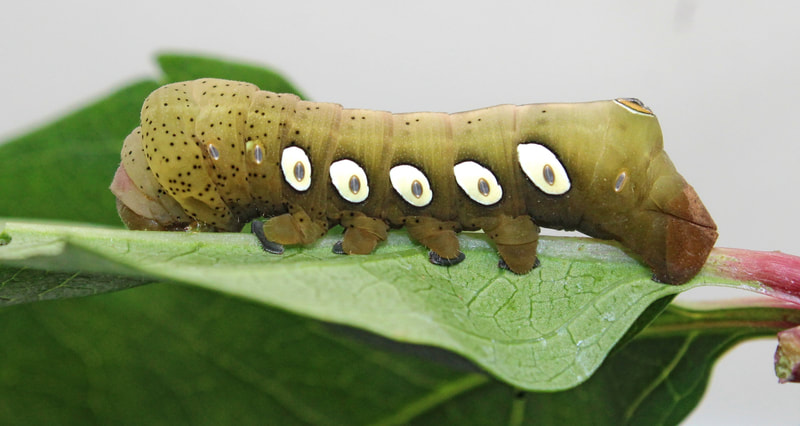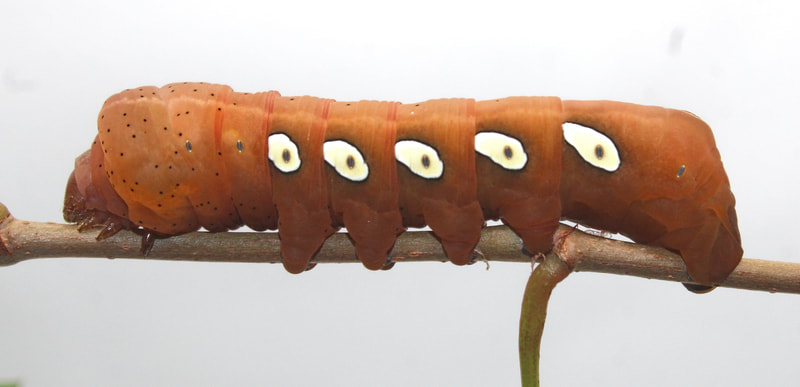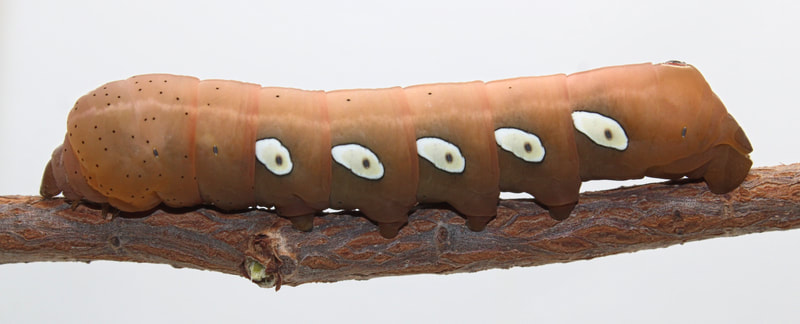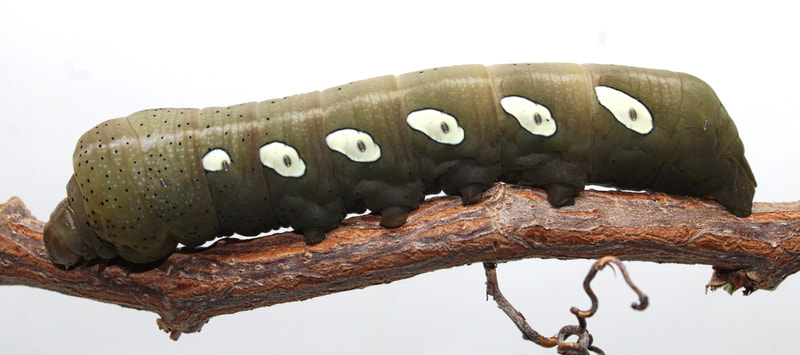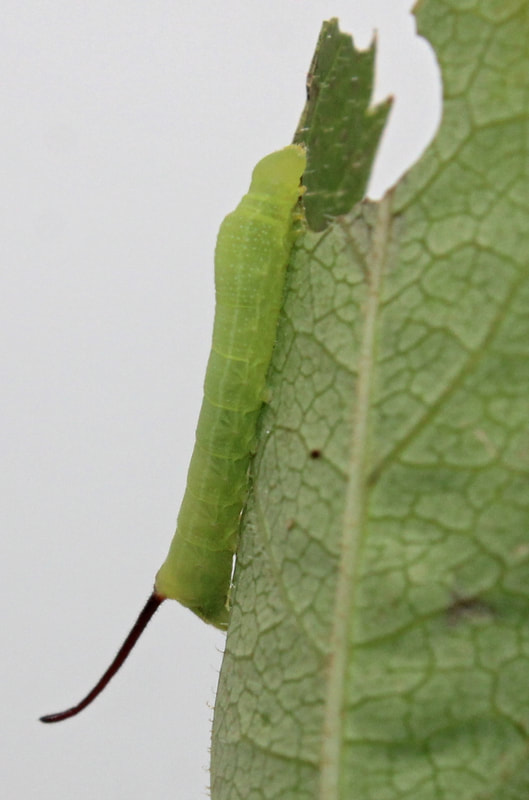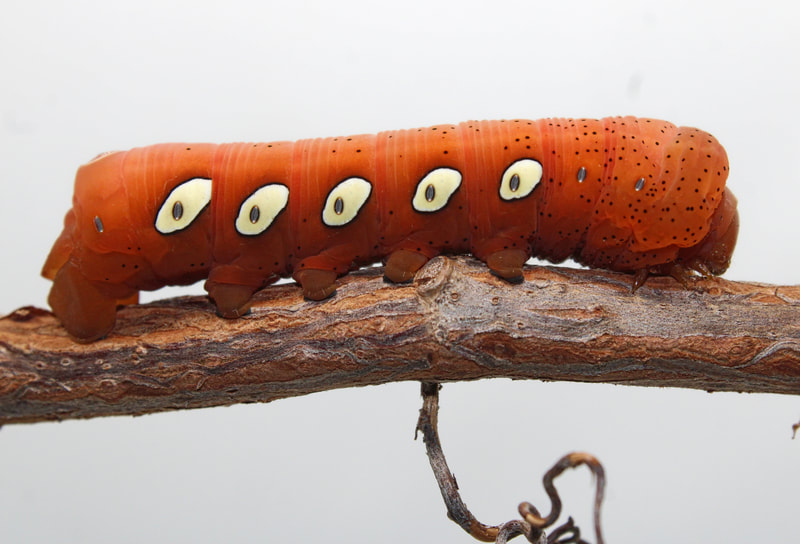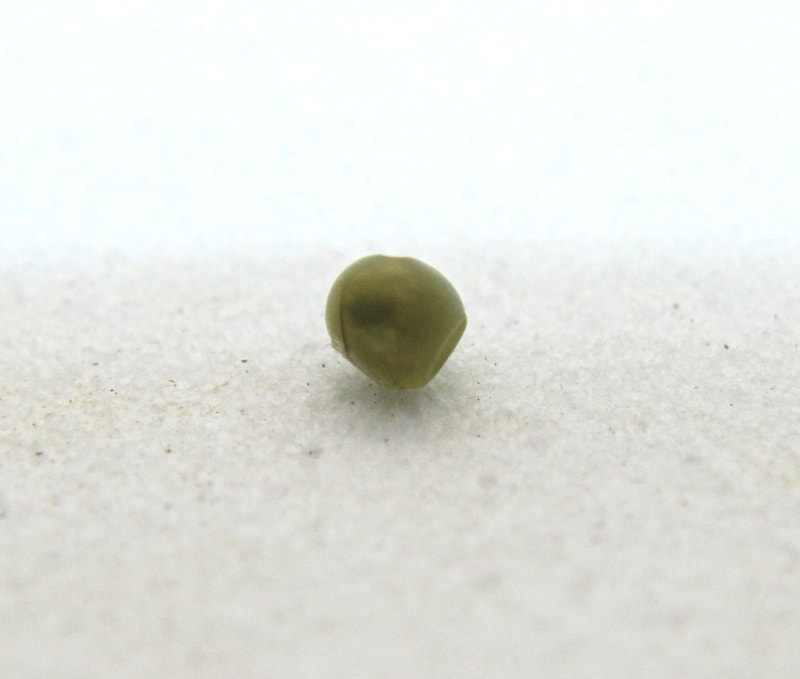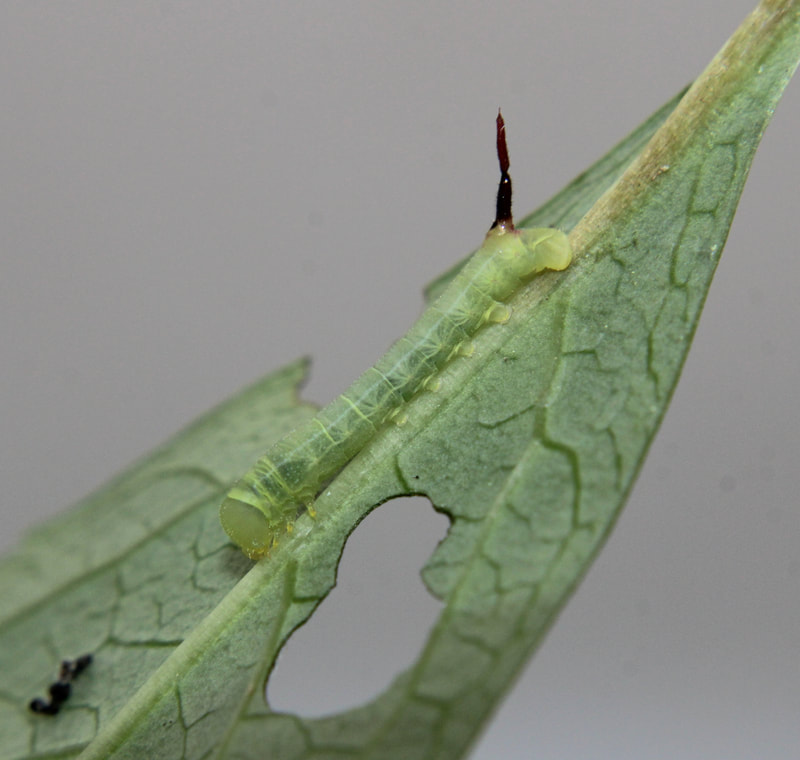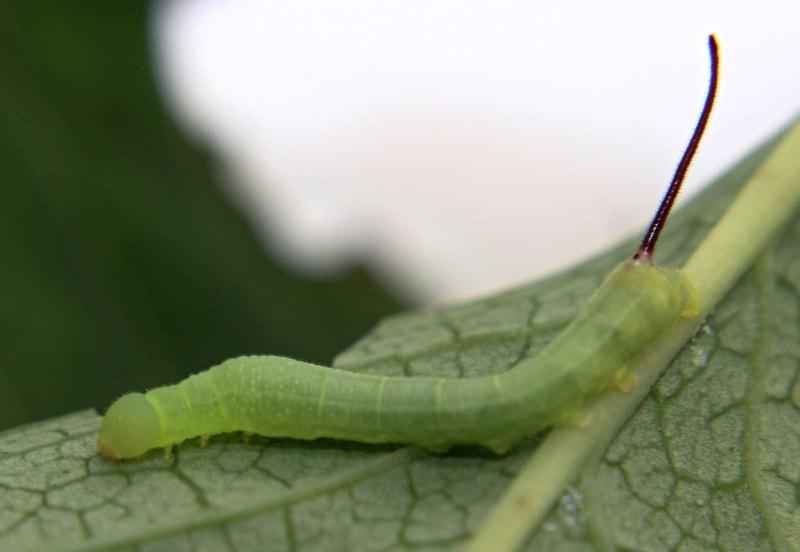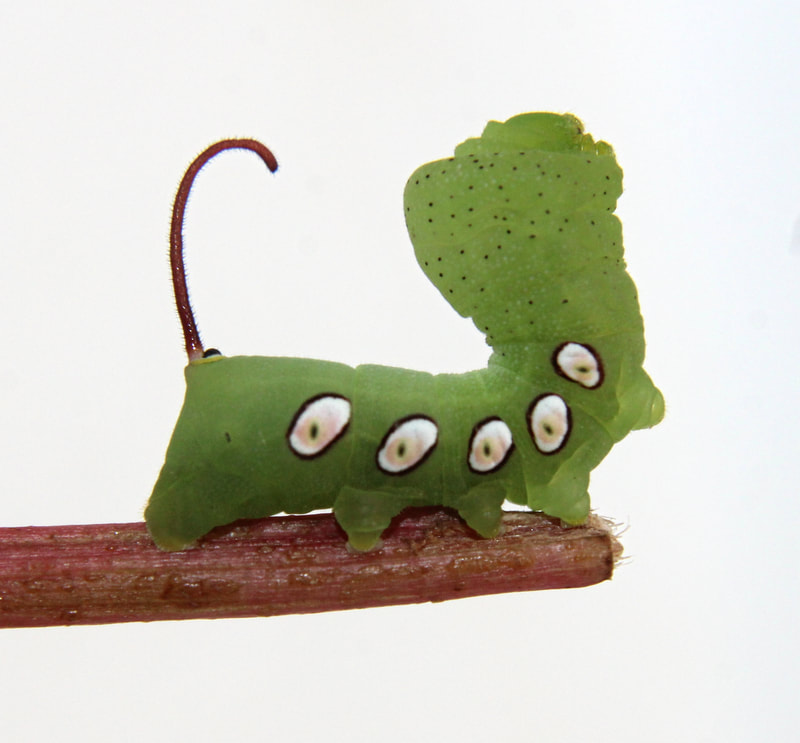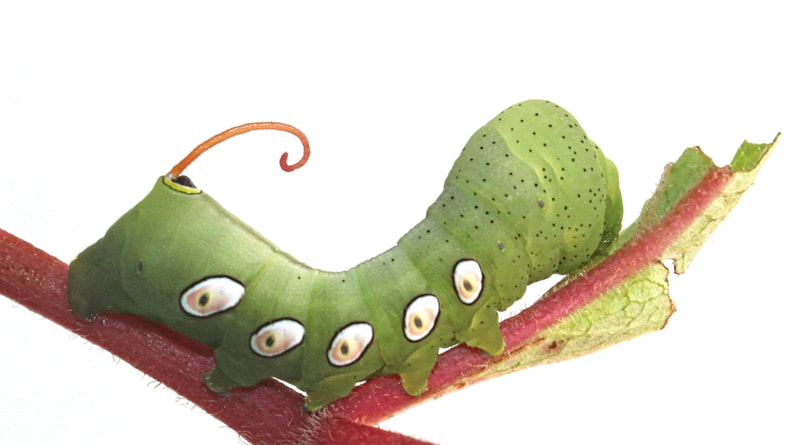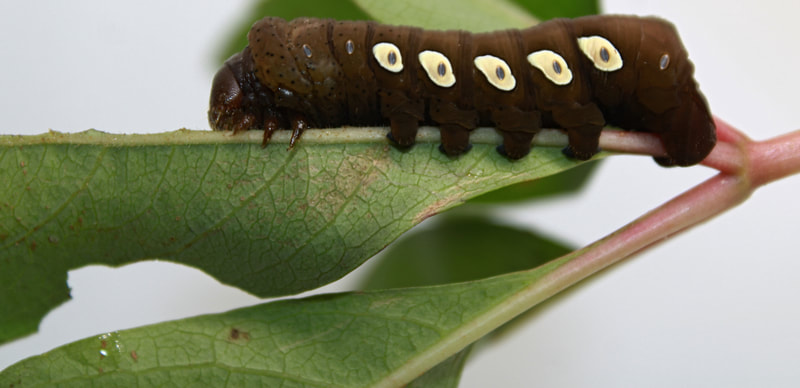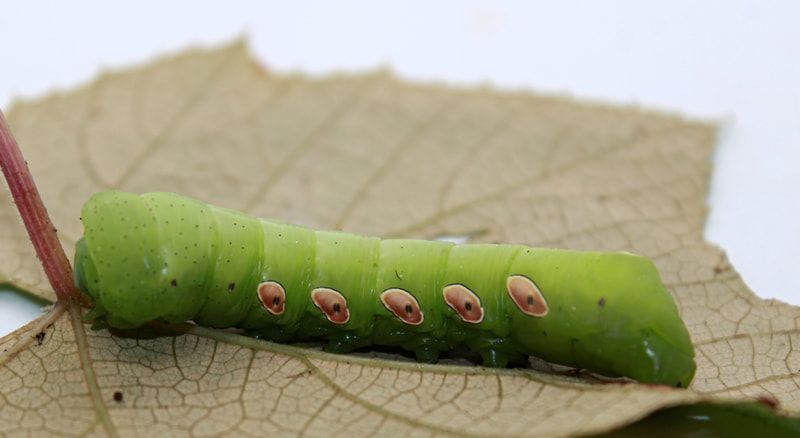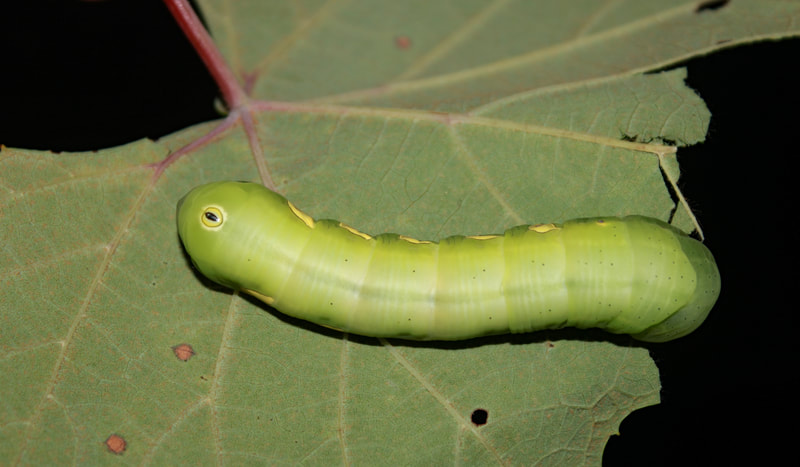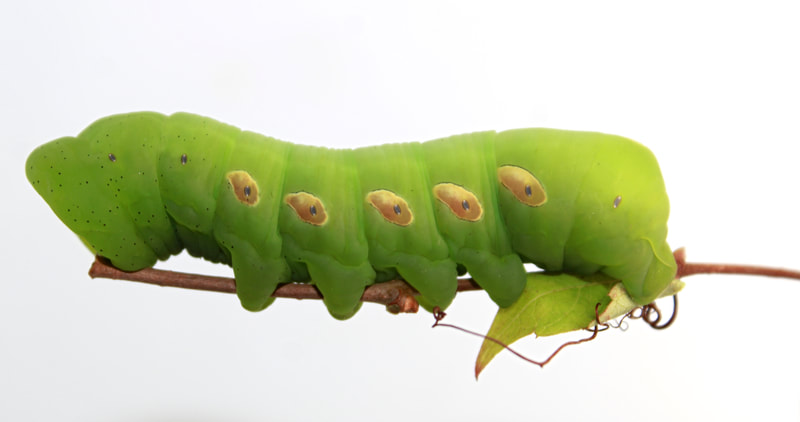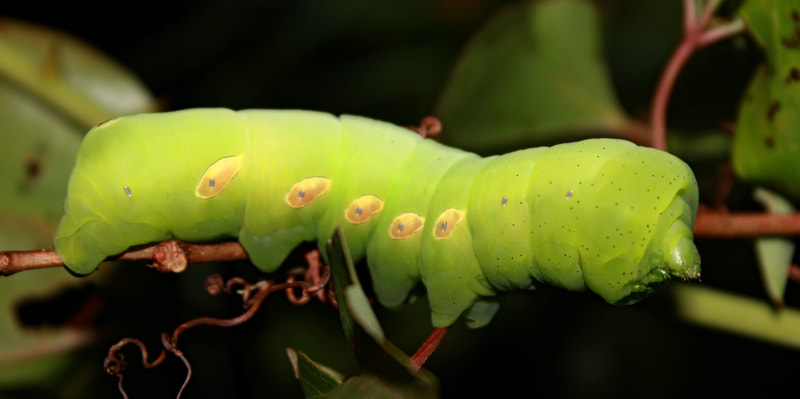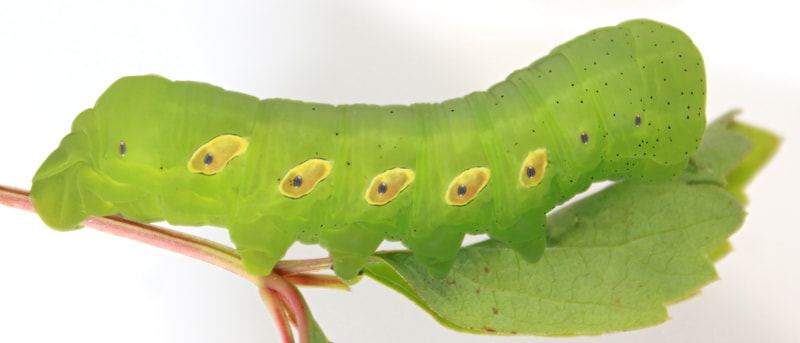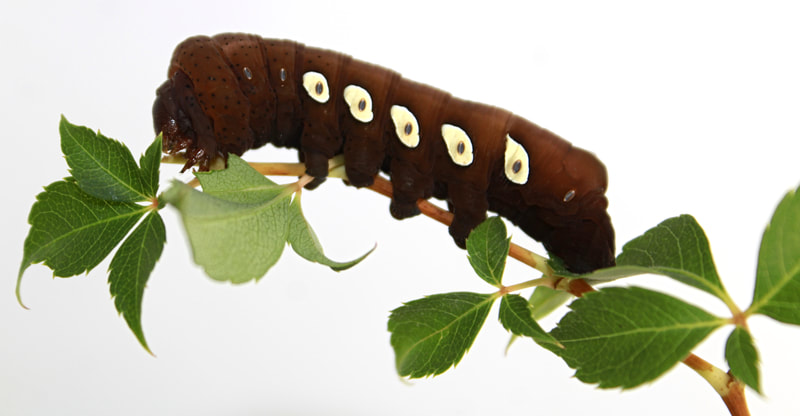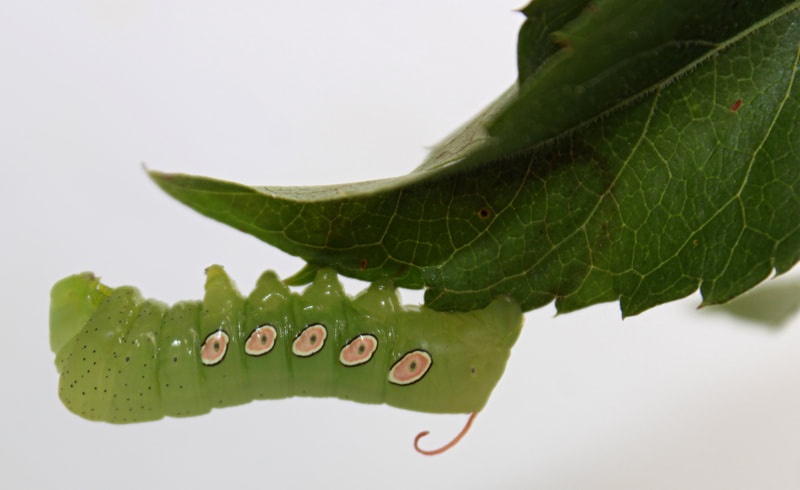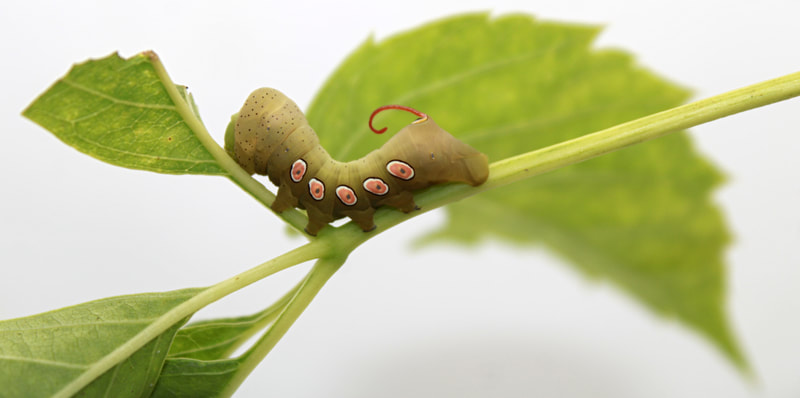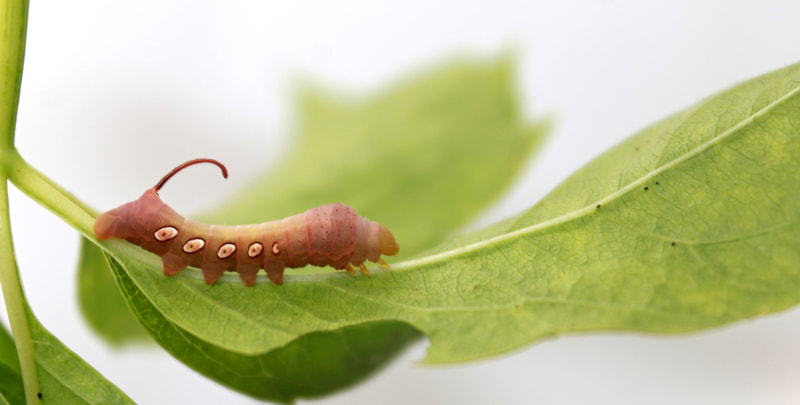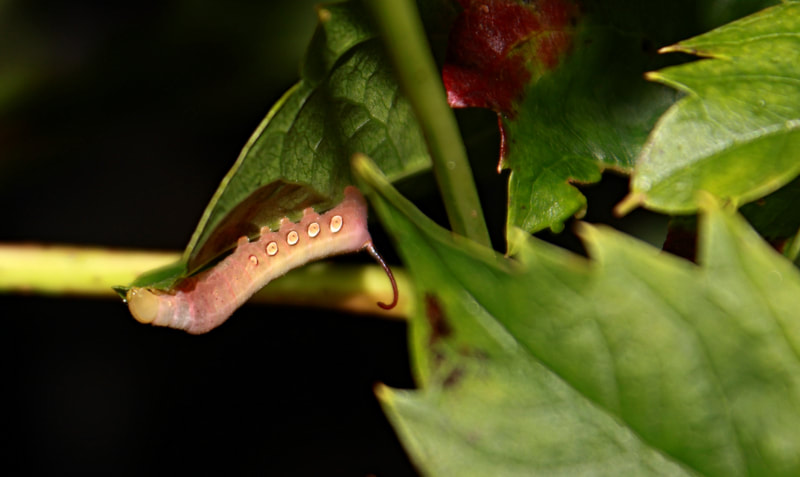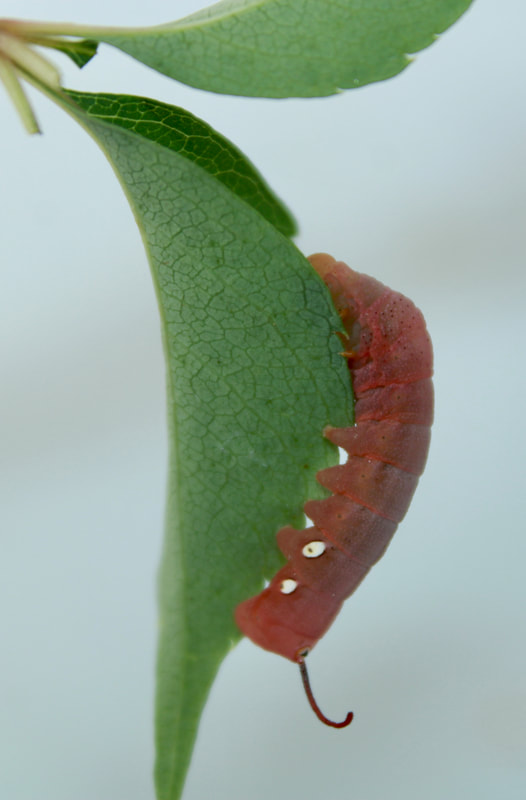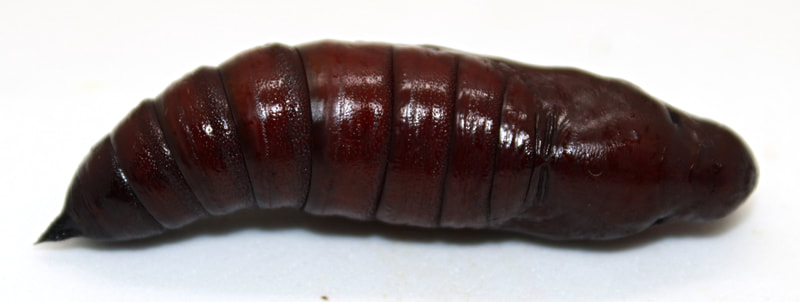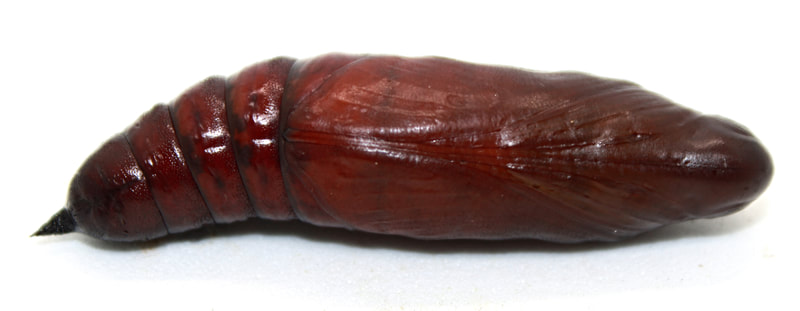|
Common names: Pandora Sphinx Moth;
Ecology: This moth flies from April through November across most of the US. It can be found in a wide variety of habitat types, and basically anywhere the hostplants grow. This moth can be quite successful in urban areas. Adults of Eumorpha pandorus can be found frequently at milkweed (Asclepias) and other flowers. They do come readily to light. Because these moths are strong, fast fliers, they are not often found in deep wooded areas. In my experience, fields, disturbed areas, pine barrens, and edge habitat seems to be best for this species. The larvae are easily located feeding at night on hostplants. Full grown larvae can easily strip vines of hostplant in a matter of days. Searching for Larvae and Rearing Notes: Larvae are easily found in all instars on their hostplants. Young larvae and eggs tend to be found on the new growth/tips of the vines (especially on Parthenocissus quinquefolia) and can be easily found at night (1). The easiest way of finding larvae is to search hostplants at night with a UV flashlight, the larvae do glow and it makes finding them remarkably easy. Larvae are easy to rear in captivity, accepting most Vitaceae. Pupation can occur in loose soil, or damp paper towels (1). Adult Description: This is a large (47-52mm FW length (3)) green moth with a large dark green patch in the basal area of the wing. Forewings often have reddish, yellowish, and bluish tints. The hindwings of this moth are striking; blue with a black border and pink along the inner margin. In the Northeastern US, this is the only moth in the genus with this nice green coloration. In the southeast and along the gulf coast, there are two similar species E. intermedia and E. satellitia. To distinguish E. pandorus from these species, look at the dark basal area on the forewing. Pandorus tends to have a very rectangular basal area, with a nearly straight distal edge; in the apex of the forewing, the thin dark subterminal line is straight (3,13,14). Hostplants: Click here to load this Caspio Cloud Database
Cloud Database by Caspio |
Larval Description:
L1: First instar larvae are small green hornworms with an extraordinarily long red horn and somewhat oversized head. L3: At this stage, the larvae look quite different. The long straight horn now curves and looks strikingly similar to a Parthenocissus quinquefolia tendril. The larvae can be yellowish, green, brownish or reddish with 5 white eyespots around the spiracles on the sides. L4: The horn might be slightly smaller, and sticks straight up, without the curve. The larva can rear its body up, and contract it’s thoracic segments back into the swollen A1 segment to give it a more menacing appearance. The color is still quite variable, ranging from yellow, green, black, brown, or red with 5 white (or whitish) eyespots along the side. L5: The larva loses the horn entirely, replacing it with a small, hard, eyespot-like mark. The larva is generally one of 4 color forms, brown, red, green, or yellow, however, black and intermediate color forms have been known. The 5 white eyespots along the side of the body are still present. Close to pupation, a large dark pulsing vein is visible on the top of the larva. A full grown larva can measure 9cm (3). |
The gallery to the left contains photos of Eumorpha pandorus adults. If you have a photo that you would like to submit to us, please contact us.
The gallery to the right contains photos of Eumorpha pandorus larval and pupal stages. If you have a photo that you would like to submit to us, please contact us.
The gallery to the right contains photos of Eumorpha pandorus larval and pupal stages. If you have a photo that you would like to submit to us, please contact us.
|
|
